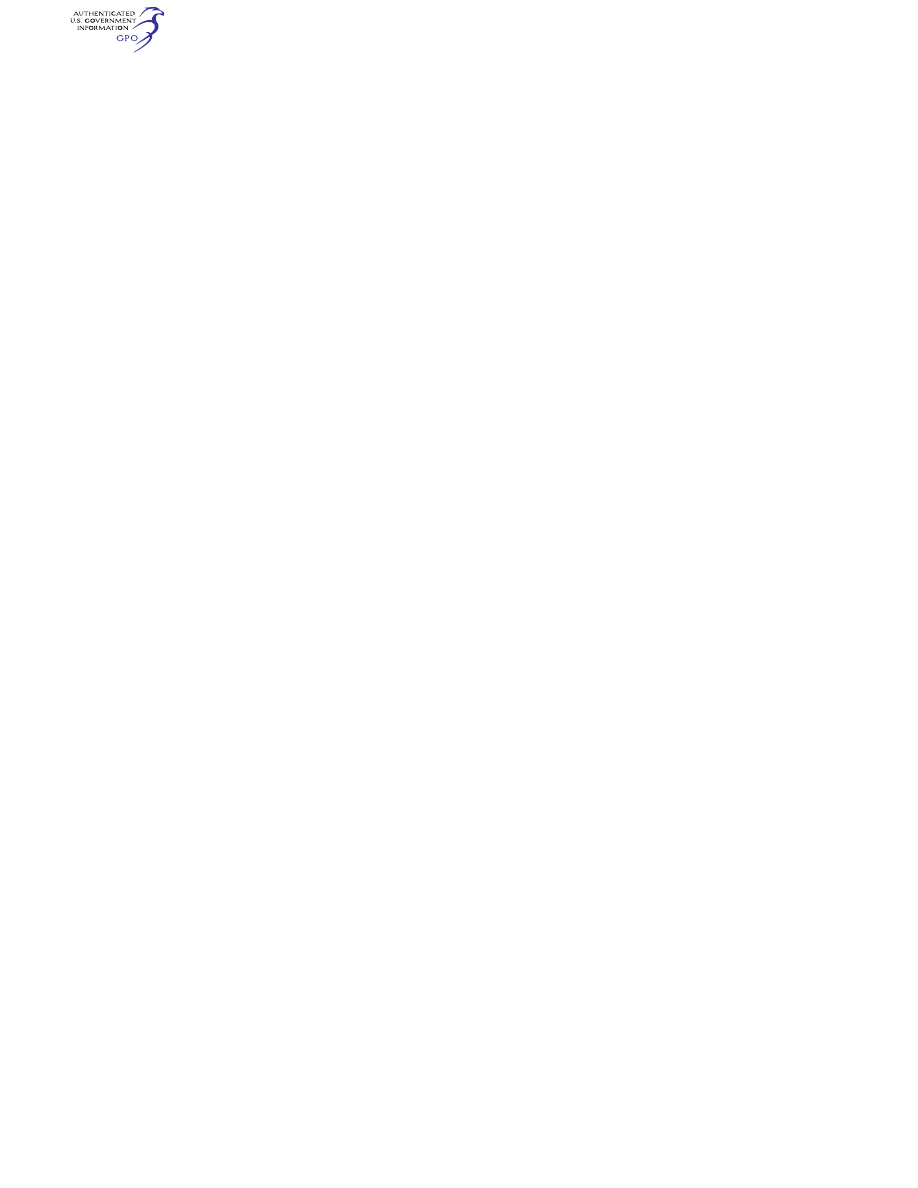
685
Federal Aviation Administration, DOT
§ 91.9
coast of the United States must com-
ply with §§ 91.1 through 91.21; §§ 91.101
through 91.143; §§ 91.151 through 91.159;
§§ 91.167 through 91.193; § 91.203; § 91.205;
§§ 91.209 through 91.217; § 91.221, § 91.225;
§§ 91.303 through 91.319; §§ 91.323 through
91.327; § 91.605; § 91.609; §§ 91.703 through
91.715; and § 91.903.
(c) This part applies to each person
on board an aircraft being operated
under this part, unless otherwise speci-
fied.
(d) This part also establishes require-
ments for operators to take actions to
support the continued airworthiness of
each airplane.
(e) This part does not apply to any
aircraft or vehicle governed by part 103
of this chapter, or subparts B, C, or D
of part 101 of this chapter.
(f) Except as provided in §§ 107.13,
107.27, 107.47, 107.57, and 107.59 of this
chapter, this part does not apply to any
aircraft governed by part 107 of this
chapter.
[Doc. No. 18334, 54 FR 34292, Aug. 18, 1989, as
amended by Amdt. 91–257, 64 FR 1079, Jan. 7,
1999; Amdt. 91–282, 69 FR 44880, July 27, 2004;
Amdt. 91–297, 72 FR 63410, Nov. 8, 2007; Amdt.
91–314, 75 FR 30193, May 28, 2010; Docket
FAA–2015–0150, Amdt. 91–343, 81 FR 42208,
June 28, 2016]
§ 91.3
Responsibility and authority of
the pilot in command.
(a) The pilot in command of an air-
craft is directly responsible for, and is
the final authority as to, the operation
of that aircraft.
(b) In an in-flight emergency requir-
ing immediate action, the pilot in com-
mand may deviate from any rule of
this part to the extent required to
meet that emergency.
(c) Each pilot in command who devi-
ates from a rule under paragraph (b) of
this section shall, upon the request of
the Administrator, send a written re-
port of that deviation to the Adminis-
trator.
(Approved by the Office of Management and
Budget under control number 2120–0005)
§ 91.5
Pilot in command of aircraft re-
quiring more than one required
pilot.
No person may operate an aircraft
that is type certificated for more than
one required pilot flight crewmember
unless the pilot in command meets the
requirements of § 61.58 of this chapter.
§ 91.7
Civil aircraft airworthiness.
(a) No person may operate a civil air-
craft unless it is in an airworthy condi-
tion.
(b) The pilot in command of a civil
aircraft is responsible for determining
whether that aircraft is in condition
for safe flight. The pilot in command
shall discontinue the flight when un-
airworthy mechanical, electrical, or
structural conditions occur.
§ 91.9
Civil aircraft flight manual,
marking, and placard requirements.
(a) Except as provided in paragraph
(d) of this section, no person may oper-
ate a civil aircraft without complying
with the operating limitations speci-
fied in the approved Airplane or Rotor-
craft Flight Manual, markings, and
placards, or as otherwise prescribed by
the certificating authority of the coun-
try of registry.
(b) No person may operate a U.S.-reg-
istered civil aircraft—
(1) For which an Airplane or Rotor-
craft Flight Manual is required by § 21.5
of this chapter unless there is available
in the aircraft a current, approved Air-
plane or Rotorcraft Flight Manual or
the manual provided for in § 121.141(b);
and
(2) For which an Airplane or Rotor-
craft Flight Manual is not required by
§ 21.5 of this chapter, unless there is
available in the aircraft a current ap-
proved Airplane or Rotorcraft Flight
Manual, approved manual material,
markings, and placards, or any com-
bination thereof.
(c) No person may operate a U.S.-reg-
istered civil aircraft unless that air-
craft is identified in accordance with
part 45 or 48of this chapter.
(d) Any person taking off or landing
a helicopter certificated under part 29
of this chapter at a heliport con-
structed over water may make such
momentary flight as is necessary for
takeoff or landing through the prohib-
ited range of the limiting height-speed
envelope established for the helicopter
if that flight through the prohibited
range takes place over water on which
a safe ditching can be accomplished
and if the helicopter is amphibious or
VerDate Sep<11>2014
14:00 Mar 14, 2024
Jkt 262047
PO 00000
Frm 00695
Fmt 8010
Sfmt 8002
Q:\14\14V2.TXT
PC31
aworley on LAPBH6H6L3 with DISTILLER
